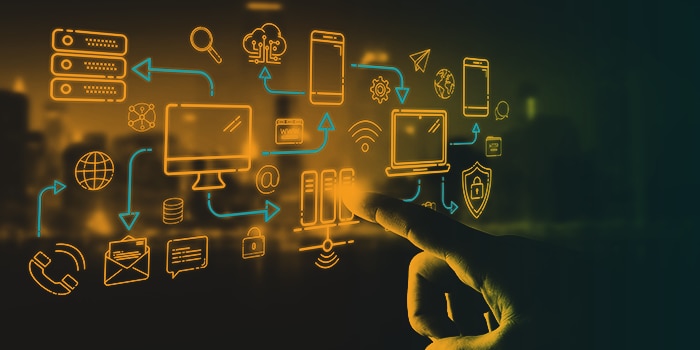Not Another AI Post...
October 10, 2018
Network

Modern network and systems engineers have a lot to deal with. Things like overlapping roles, constantly changing client devices, and new applications popping up daily create headaches beyond comprehension. The amount of data produced by packet captures, application logs, and whatever else you have to help troubleshoot issues is astounding and can leave even the most skilled engineer reeling when trying to track down an issue. The human brain is designed to recognize patterns and outliers, but it is simply not equipped to deal with the scale of today’s IT issues.
Over the past few years, data scientists and software developers have teamed up to try to solve this problem using an old paradigm but emerging technology: Artificial Intelligence and Machine Learning (AI from this point on). AI, put simply, is a program that is “trained” to monitor a given data set while looking for either specific or unspecific information contained within. By scouring the data, it can build complicated patterns and baselines, learning along the way what is “normal” for a given system and what isn’t, as well as forming predictions based on what could be coming next. From there, a few things can happen; from as little as flagging the information for later review by human eyes all the way up to a completely automated remediation of any notable issues discovered.
Right now, you’re either thinking “Sign me up! I want to AI!” or “Not another one of these…” And I don’t blame you. I’m all AI-ed out too. But that doesn’t mean it isn’t useful. Just do what I do when I hear yet another marketing person start talking about the rise of the machines. Cover your ears and yell. I don’t care about how a vendor is going to get something done, I just want to know what it will do for me. I’m a wireless network architect, a coder, and a technology lover. I am not a data scientist. Make my job easier and I’ll be your best friend at lunch (which you’re paying for). What can AI do for me and you as the ones keeping the lights on and moving our companies forward technologically?
The most basic use case I’ve come across is historical data correlation and actionable health prediction. Like I mentioned, I’m a wireless architect. I design and manage a massive wireless network across a large geographic area. Monitoring the network, applications, RF, and performance of hundreds of thousands of clients across the entire organization isn’t just a difficult job -- it’s impossible for a single group to do without some serious assistance. The tribal knowledge contained within each team I work with is impossible to impart on a single person or persons to monitor everything and correlate all that information into any sort of useful data. That’s where AI comes in. Using historical trends to predict new needs, looking at past failures to see when the next one will occur, knowing that certain events or even times of the year will cause application load we can’t handle, we can properly scale and prepare for nearly anything.
Now, as I mentioned above, I’m not a data scientist but I have no problem letting them make my job easier. As much as I hate the term AI (I’ll explain in a later post) and the marketing drives me crazy, I am welcoming it with open arms. I am also waiting with a baseball bat to take it down if anything goes wrong.
This is the first post in a series I will be writing about Artificial Intelligence and Machine Learning, which will cover how I use it, why I love it, why it terrifies me, and why words matter. Stay tuned for more. I promise it won’t be too dull.






